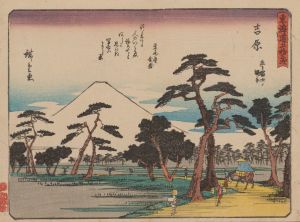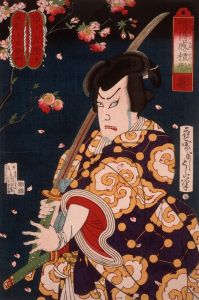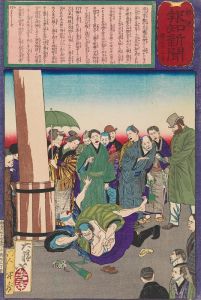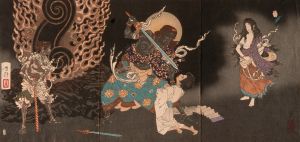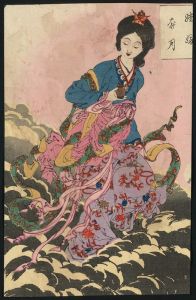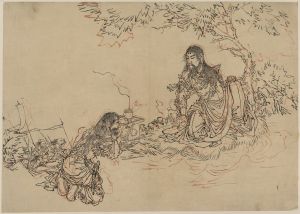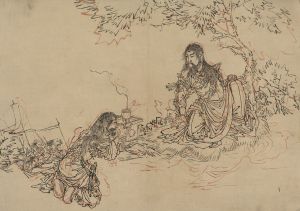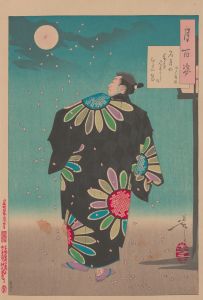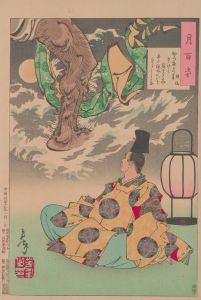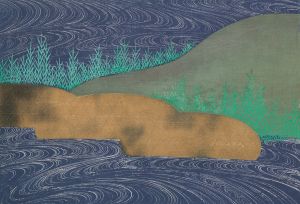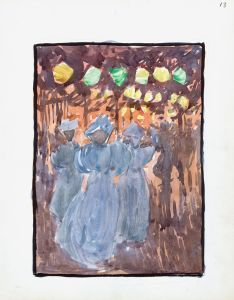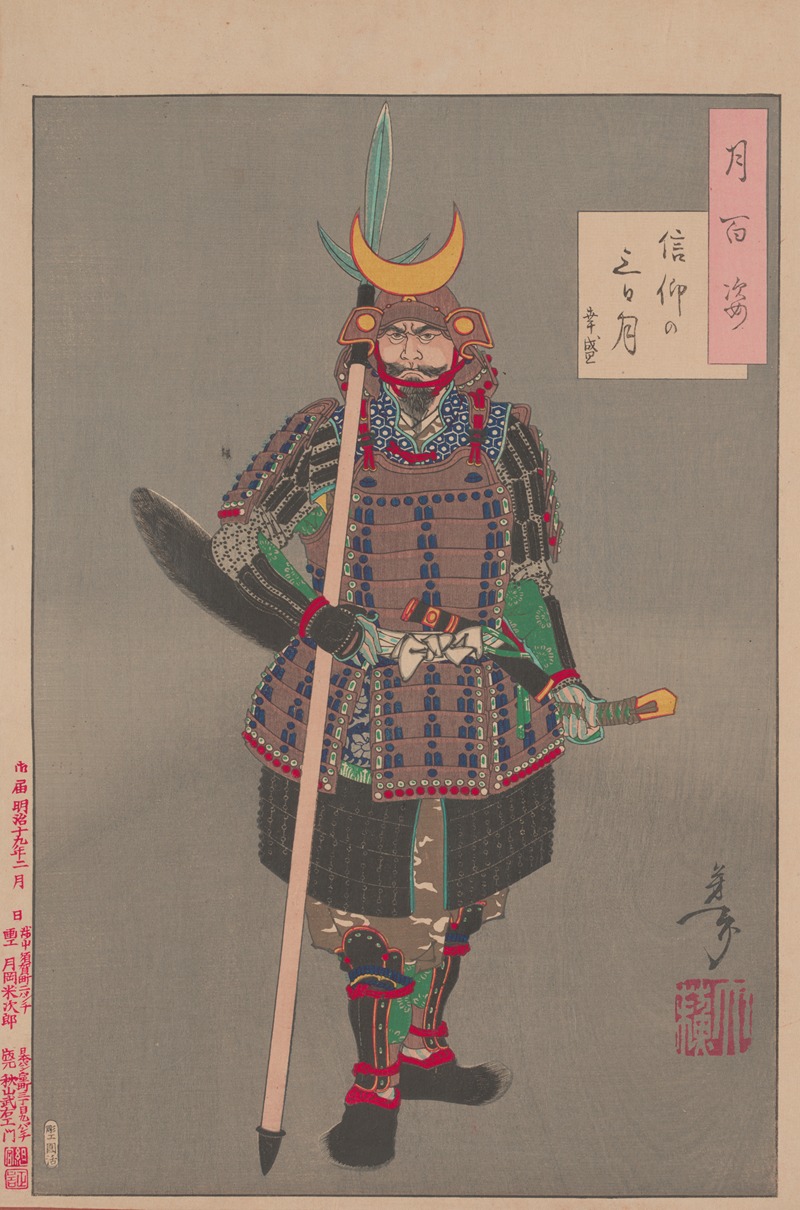
Faith in the third-day moon
A hand-painted replica of Tsukioka Yoshitoshi’s masterpiece Faith in the third-day moon, meticulously crafted by professional artists to capture the true essence of the original. Each piece is created with museum-quality canvas and rare mineral pigments, carefully painted by experienced artists with delicate brushstrokes and rich, layered colors to perfectly recreate the texture of the original artwork. Unlike machine-printed reproductions, this hand-painted version brings the painting to life, infused with the artist’s emotions and skill in every stroke. Whether for personal collection or home decoration, it instantly elevates the artistic atmosphere of any space.
"Faith in the Third-day Moon" is a woodblock print created by the renowned Japanese artist Tsukioka Yoshitoshi. Yoshitoshi, born in 1839 and passing away in 1892, is often celebrated as the last great master of the ukiyo-e genre of woodblock printing and painting. His works are known for their dynamic composition, vivid colors, and often dramatic and emotional themes.
This particular print, "Faith in the Third-day Moon," is part of Yoshitoshi's acclaimed series "One Hundred Aspects of the Moon" (Tsuki hyakushi), which he produced between 1885 and 1892. The series consists of 100 prints, each depicting various scenes from Japanese and Chinese history, literature, folklore, and mythology, all unified by the presence of the moon.
"Faith in the Third-day Moon" features a scene from the life of the famous samurai and warlord Minamoto no Yoshiie (1039–1106), who was known for his military prowess and strategic acumen. In the print, Yoshiie is depicted observing the moon, which is a symbol of his faith and determination. The third-day moon, or mikazuki, is a slender crescent that appears just after the new moon, symbolizing new beginnings and the waxing strength of the samurai's resolve.
Yoshitoshi's depiction of Yoshiie is both powerful and serene, capturing the samurai's contemplative nature as well as his readiness for action. The use of the moon in the background not only adds a mystical quality to the scene but also serves to highlight the cultural significance of the moon in Japanese art and literature. The moon often represents beauty, transience, and the passage of time, themes that are prevalent throughout Yoshitoshi's series.
The print is characterized by Yoshitoshi's masterful use of color and line. The delicate gradations of the moonlight and the intricate details of Yoshiie's armor and surroundings demonstrate Yoshitoshi's technical skill and artistic sensitivity. The composition is carefully balanced, with the figure of Yoshiie dominating the foreground while the moon provides a luminous focal point in the background.
Yoshitoshi's "One Hundred Aspects of the Moon" series, including "Faith in the Third-day Moon," was highly influential and remains a significant achievement in the history of Japanese art. The series reflects Yoshitoshi's deep appreciation for traditional Japanese culture and his ability to convey complex emotions and narratives through his art.
Today, "Faith in the Third-day Moon" and other prints from the series are held in various museum collections around the world, including the Museum of Fine Arts in Boston and the British Museum in London. These works continue to be studied and admired for their artistic excellence and historical significance, offering insight into the rich cultural heritage of Japan and the enduring legacy of Tsukioka Yoshitoshi.






